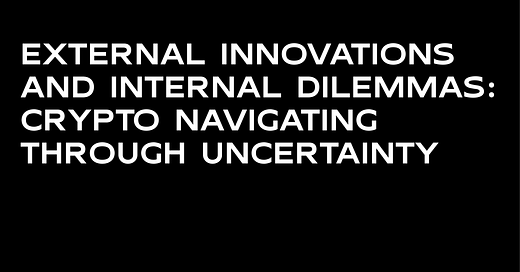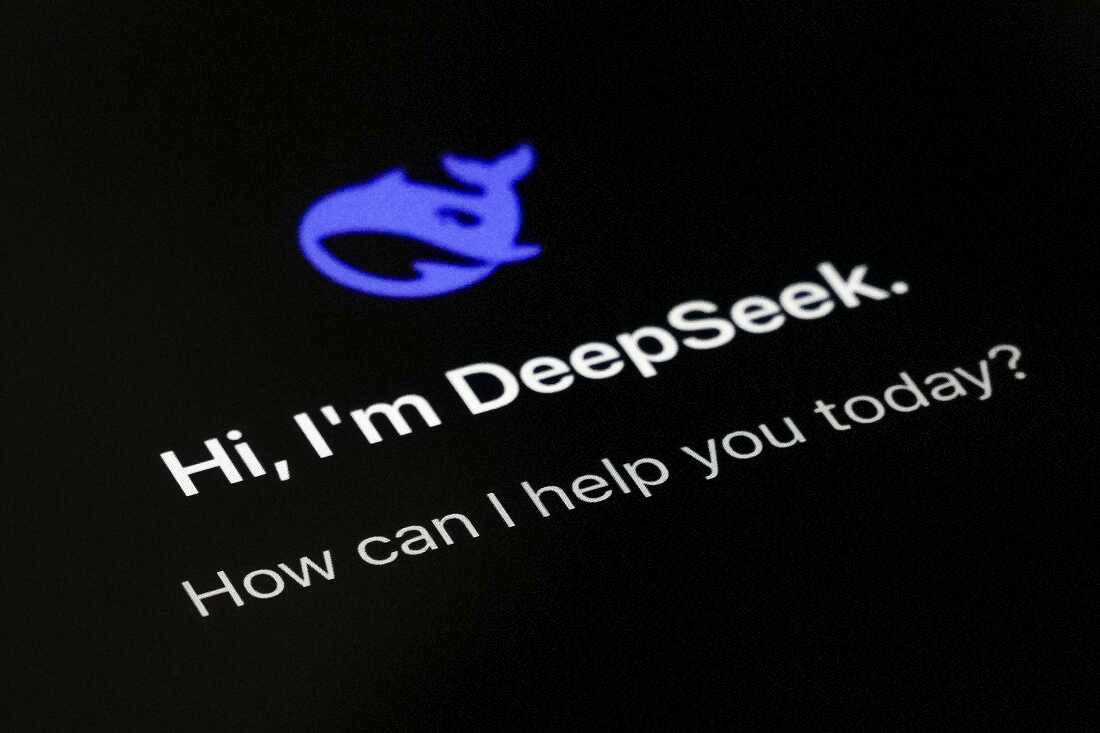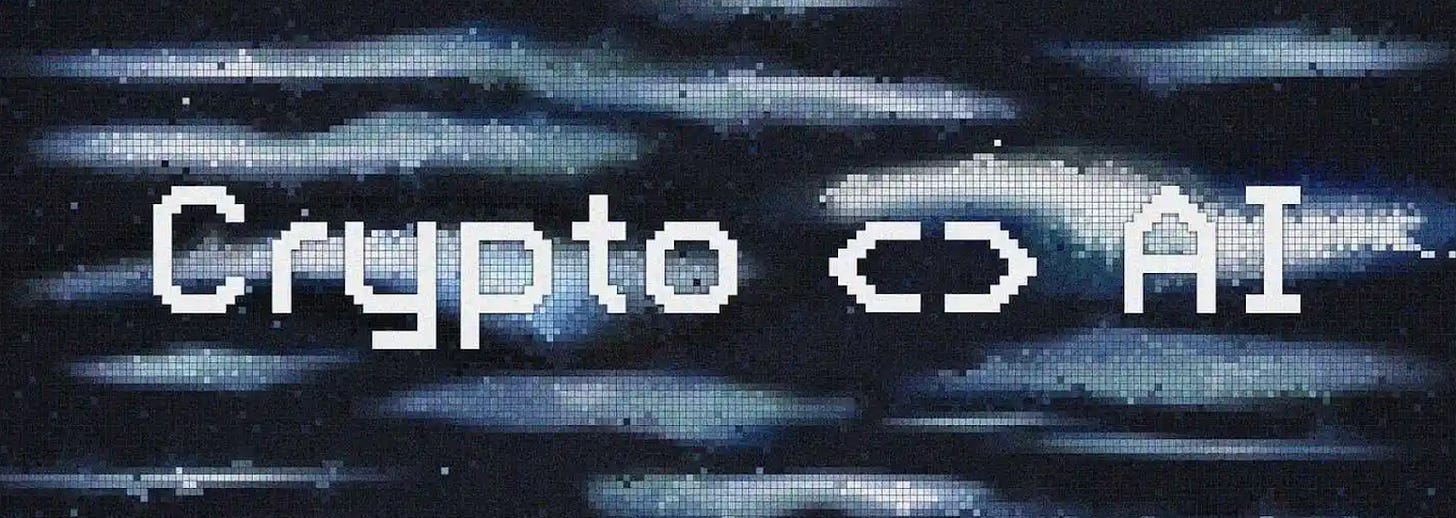External Innovations and Internal Dilemmas: Crypto Navigating Through Uncertainty
As external tech innovations reshape industries, Crypto struggles to find its path amidst internal challenges.
Author: YBB Capital Researcher Zeke
I. AI is Inevitable, But Crypto x AI?
As 2025 begins, the AI community was shaken by a “nuclear bomb” dropped by DeepSeek, developed by Fantom Quant. A Chinese AI model, trained using only 2048 NVIDIA H800 GPUs at a cost of $5.58 million (about one-tenth of Meta’s cost), directly rivaled the likes of GPT-4 and Llama 3.1 in benchmark tests such as MMLU and GPQA. It even slightly outperformed these Silicon Valley giants in areas like complex reasoning and Chinese semantic understanding. Despite the years of chip blockades imposed by the US on China, DeepSeek’s computational prowess dramatically deconstructed the US’s monopoly, as China developed a technology path suited to its own national context but still competitive with top-tier global models. This open-source, low-cost, and homogeneous approach penetrated the US’s computational defense with striking success.
For years, Chinese technology products, which were often seen as a step behind in performance, have been stereotyped as cheap and derivative. I believe this was the intuitive perception that many had of Chinese internet companies. However, DeepSeek is different. Without getting into the subjective experience of whether it surpasses ChatGPT, the fact that this event has been frequently mentioned in US political and tech circles speaks volumes. It’s clear that China has now transitioned from a technology follower to a challenger, and the global ripple effect is profound.
Although the first impact is on my wallet, which can be attributed to a misjudgment of traditional AI development, I still want to share my perspective, particularly on the impact of DeepSeek on the crypto industry.
1.NVIDIA is the biggest loser in this event. First, the demand for AI computational power has been questioned, and second, NVIDIA’s unified hardware and software computing architecture, CUDA, was bypassed. If you’re familiar with the AI field, you would know that CUDA is a key cornerstone in driving modern AI development. When large model developers use NVIDIA GPUs, they generally rely on CUDA for their work. Using CUDA lowers the technical requirements for developers since it has pre-packaged functions, meaning developers don’t have to worry about too many details, but this comes at the cost of execution efficiency.
Since CUDA is a general-purpose programming framework, it limits flexibility during model training. DeepSeek’s solution was to directly use PTX (NVIDIA’s intermediate instruction set framework designed for GPUs) to bypass the hardware limitations on training speed, thus shortening the training duration. While other models require 10 days for training, DeepSeek can complete it in 5 days. This also means that if DeepSeek plans to adapt to China’s domestic GPUs in the future, the hardware adaptation process will be more seamless, potentially shaking NVIDIA’s dominance in the AI chip market. (This paragraph is sourced from a report by Korea’s Future Asset Securities on DeepSeek’s training process.)
Aside from the potential drop in NVIDIA’s stock price, which would severely impact the crypto market, which is closely tied to US stocks, I personally believe that in the long run, this will actually benefit decentralized computing projects. First, more personal GPUs will be able to contribute their spare computing power. Second, if DeepSeek’s compact, open-source model approach succeeds, it will force many AI companies to open-source their models, leading to increased demand for local deployment and secondary development computing power. Looking at DeepSeek R1’s hardware requirements, ranging from a minimum of 1.5B parameters to a maximum of 70B, GPUs from the NVIDIA GeForce GTX 1660 Super to the 40 and 50 series, and even professional-level A100 and H800 GPUs, will all have opportunities to contribute surplus computing power. For decentralized computing projects that are currently somewhat underutilized, this could be a potential breakthrough — provided the latency is low enough.
2. AI Framework Projects: The Hot Crypto Track Before DeepSeek’s “Nuclear Bomb”
Before DeepSeek dropped its “nuclear bomb,” AI framework projects were the hottest emerging track in the crypto space, and they were the last topic I covered before the Chinese New Year. However, in the wake of DeepSeek’s breakthrough, most of these projects are now rapidly trending toward zero. After all, DeepSeek achieved parity with OpenAI for less than $6 million in costs, while our leading projects, with FDV in the billions, have yet to produce anything that can truly be considered a practical AI Agent.
Since the inception of blockchain, there has been an almost obsessive pursuit of assetization. Currently, the crypto space has become highly tolerant of assetization. For AI framework projects that are not even on-chain, they only need an open-source GitHub repository and a social account to issue tokens. This “library-based coin” approach carries the inevitable risk of being wiped out by a “two-dimensional foil” attack from traditional AI companies one day.
In the golden age of AI development, traditional internet companies are unlikely to stop with DeepSeek as their sole weapon. AI development in the US-China rivalry will only accelerate, and the key question is how Crypto can combine with the upstream and downstream of AI to highlight the decentralized advantages without being struck down by an unexpected AOE. Broadly, we can categorize the Crypto x AI tech stack into four layers: computing power, data, middleware, and application. In the current layered structure, I fail to see the necessity of Crypto’s involvement. However, from a future perspective, privacy and security could be strong angles, as AI agents have already become a reality in replacing or assisting human jobs. Ensuring the privacy of AI-handled work and personal data could be a challenge traditional internet companies cannot solve. Further, if an AI agent has payment permissions, ensuring the security of wallets will become an issue. Using blockchain as the compliance and auditing layer for AI models could be the key direction for future development.
On the other hand, incentives also play a crucial role. Aside from stimulating computing power and model sharing, incentives could teach AI how to interact with the virtual world. Unlike LLMs, which have decades of global internet data at their disposal, teaching AI the right actions requires continuous human labeling. For instance, teaching a vision model to recognize animals versus cars isn’t something that can be outsourced to a group of college students. To create an AI agent that can interact with the virtual world, a large decentralized network of individuals will be needed to teach the AI. This is one potential direction. In my past articles, I discussed this in greater detail. What else can incentives drive? Combining with DePin to teach AI agents to interact with the physical world, incentivizing AI to gain attention, incentivizing second creation of AI (Bittensor’s incentivization model is a great example), or having token incentive mechanisms automatically adjusted by AI — these are all fascinating possibilities. This leads to another question from my previous article: When a decentralized project grows massive and enters the mainstream, how should deflation and inflation be managed? Should it rely on simple code rules, a few people in the project team, or those key individuals? And, of course, we have governance tokens. However, governance tokens are meaningless before solving the “witch problem.” Democratic voting will never be reflected in governance proposals, as a16z can veto a large community’s votes with just a few wallets, so what’s the point of voting?
We certainly cannot gather a group of high-end AI talents like traditional internet companies, nor can we purchase or rent massive GPU clusters to train. Trying to replicate DeepSeek within blockchain is a pipe dream. The role of Crypto is to bring an irreplaceable decentralized characteristic to another field, just as we once brought financial freedom to the world. AI is the inevitable narrative of humanity, but the crucial question is: What role can Crypto play in this?
3. Wordcoin: A First Discussion on a Cryptographic Utopia Project
This is the first time I’ve mentioned Wordcoin in my articles. This cryptographic utopia project, initiated by Sam Altman, seems absurd to me even now. The decision to record one’s iris feels like choosing between state surveillance and corporate surveillance, something akin to the red pill and blue pill choice in The Matrix.
However, the idea of universal basic income, or financial inclusivity, no longer seems like a joke at this stage. DeepSeek’s AI agents, capable of local deployment to rival top-tier models, have already begun appearing in Chinese hospitals and government institutions. According to McKinsey’s 2024 forecast, up to 50% of jobs could be replaced by AI within the next six years. The future version of Wordcoin could even be distributed by the government. If this trend intensifies, related tokens for universal finance might emerge and be repeatedly hyped. Given a five- or six-year window, this could align with Trump’s presidency. Would a crypto president issue such a token? I think it’s highly likely.
4. Elon Musk and the Future of AI Research Funding
In light of Elon Musk’s recent statements, AI might dominate the Nobel Prize for the next 25 years. I believe that blockchain-based fundraising (even contributing computing power, storage, methods, and other resources) to promote AI research will be more interesting and effective than the current decentralized science (DeSci) movement. Perhaps I can call this Decentralized AI Science, or DeAIS.
II. Meme Coin Is No Longer Meme
Previously, when we discussed Meme Coins, the focus was on subculture, community consensus, and viral effects. Now, sitting in front of GMGN, I analyze conspiracy groups, lead addresses, and developers’ insider trading. When a CA is issued across various “shitcoin” groups, it’s go-time. Today’s meme coins are more ridiculous than ever before. In the current phase of Pump.fun, don’t expect to find a stable token you can sleep on — by the time you go to the bathroom, the chart may have plummeted.
The simplification of asset issuance thresholds and the high anonymity of blockchain have driven this casino-like culture to its extreme. A no-name operation can turn the crypto market into an ATM. The evolution of memes is increasingly casual — not just “library-based coins,” but any event, any person, or even any AI can become a coin. There’s no cultural core, no consensus binding the community, and so-called leading projects can be forgotten in just a few weeks. The celebrity coin craze, sparked by Trump, lasted only a month. Under a tweet from President Milei, billions of dollars flowed out of Sol and back into the outside world, signaling the retreat of memes. Milei’s reaction was simple: delete the tweet and reply, “I wasn’t aware.”
The rapid development of AI has stolen too much attention from the world, and the progress of technical factions has stalled. Retail investors, abandoning value investing, can only bet on being the lucky few in a pump-and-dump scheme. Liquidity, increasingly scarce, is repeatedly drained, reflected in the daily red K-lines of CEXs and DEXs, and the disdain of traditional capital and outsiders for altcoins.
III. Carving the Boat Cannot Retrieve the Sword
The cycle law is clearly no longer effective; all the methods of “carving the boat to find the lost sword” are failing to retrieve the lost sword. A bull market in BTC does not automatically mean that altcoins will also rise, but when BTC falls, altcoins will definitely follow. Our understanding of altcoins must be updated. The altcoin market is no longer one where a whitepaper can support a project — large projects listed on top-tier CEXs must be sufficiently mature to sustain their token prices.
Looking back at token growth over the past seven years, in the 2017 market, there were fewer than 2,000 tokens listed, whereas by 2024, the number of listed tokens has approached 25,000 (source: CoinGecko, including delisted tokens). The exponential expansion in the number of tokens is essentially the irreversible evolution of the blockchain’s low-entropy value system into a high-entropy noise system. When each token in 2017 still carried the ideal of “disrupting the world,” by 2024, tokens have evolved into liquidity exit chips. The emergence of more tokens has not led to more innovation or real-world applications, but the valuation of star projects has dramatically increased the demand for market liquidity.
As mentioned earlier, without external world recognition, retail investors cannot support these projects’ valuations. Most altcoin projects see their market price peak at the time of listing, and Binance becomes their final stop. The crypto world needs a revolution. Star projects should justify their massive funding. Bybit’s trial of public financial disclosures for projects might be a potential solution. However, in my personal opinion, the market needs a deep bear market to reshape the valuation system and listing standards for altcoins.
IV. Confusion
I once saw a glimmer of hope in Ton, thinking that the beginning of crypto’s consumer-grade applications had arrived. But this fleeting light faded away as the Tap to Earn trend died down. Five years ago, the liquidity mining spawned by DeFi brought the crypto world to an unprecedented peak. Five years later, the only successful area we still have is DeFi.
When I communicate with people in the industry now, the topics are simple: “Did you buy BTC? Did you short it? Got any CAs?” Everyone is confused; we can no longer find the right direction. Outside of BTC, buying any token these days doesn’t allow for a peaceful night’s sleep. “Diamond Hands” today is no longer a term of praise; if you’re not holding BTC, it’s more like being a fool.
When I open the various chain media apps on my phone, it feels like reading The New York Times and tabloid gossip. All kinds of phenomena reflect the fact that most of the hope in this circle is now pinned on policies and attention. From a VC perspective, our future may lie in investing only in tool products, while asset issuance platforms become shovel-sellers and rent collectors in order to survive.
Conclusion
Clearly, this is not the reality we wish to see. Although the current state of Crypto seems to be lost in a fog of confusion, DeepSeek’s success proves that innovation and reform remain the most effective path to breaking through a stagnant situation. Crypto is currently in the best position it has ever been, with favorable policies, attention, funds, and solid infrastructure. In the not-too-distant future, many altcoin ETFs may inject new liquidity into the market. We are clearly in the mainstream, yet trapped in our own walled city. Behind the retreat of Meme Coins may lie a turning point, and the future of humanity may not only revolve around AI.
About YBB
YBB is a web3 fund dedicating itself to identify Web3-defining projects with a vision to create a better online habitat for all internet residents. Founded by a group of blockchain believers who have been actively participated in this industry since 2013, YBB is always willing to help early-stage projects to evolve from 0 to 1.We value innovation, self-driven passion, and user-oriented products while recognizing the potential of cryptos and blockchain applications.







